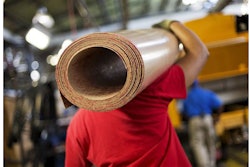At the end of last year, Congress did U.S. manufacturers a major favor. Now, it is up to those manufacturers to follow through on their good work.
In December, Congress passed and the president signed into law the Protecting Americans from Tax Hikes Act (PATH) of 2015. Among a host of other tax provisions, what is most interesting to manufacturers is that the legislation expands and makes permanent the R&D Tax Credit — the largest tax credit out there not only for U.S. businesses but also for the manufacturing sector as a whole. Along with providing manufacturers much-needed certainty in filing their annual tax returns, one specific — and perhaps overlooked — enhancement to the credit could mean millions in added tax savings for the industry.
However, before we dive into what’s new, let’s take a moment to review the credit.
The R&D Tax Credit: A Brief Primer
Taking into account that the R&D tax credit provides an estimated $10 billion in annual tax savings for U.S. companies, and considering that statistics from the IRS for the latest tax year on record reveal that manufacturers make up the largest amount of credit claims (at 39.2 percent), it might surprise you to know that the R&D tax credit is actually still under-claimed by the majority of qualifying businesses. The Wall Street Journal estimates that only 5 percent of qualifying companies claim the credit. And considering its broad application within the manufacturing industry, I can assure you that manufacturers are still among the worst offenders in overlooking what can be vital tax dollars.
Indeed, self-censoring (assuming you don’t qualify and don’t even bother to apply) remains the greatest issue with businesses overlooking the credit, and I can tell you from firsthand experience that this is largely due to a misunderstanding of what the tax laws define as “research and development.” In short, while the credit does reward medical research or cutting-edge work taking place in Silicon Valley, it is also very much about applied science as well — meaning steps that are taken to make a product or process cheaper, faster, cleaner or more efficient. As you can imagine, this is where the credit traditionally applies for a manufacturer.
Case in point, an injection molding company specializing in both automotive plastics and sporting goods received more than $450,000 in federal and state R&D tax credits for four years’ worth of eligible projects. The company was able to qualify through a number of eligible activities, but to highlight the nature of the credit, let’s break down one example.
Real-World Application
Specifically, during a project to create a V8 rocker cover for an automotive client, this company had to develop a manufacturing and assembly process for the part. This required the company to undertake a systematic trial-and-error process to create a robotic arm to transfer the molded part to the assembly fixture rather than to the operator, as was the typical method. After the company discovered the robotic arm was not strong enough to handle the part, the company made design improvements to strengthen the arm and lock the part into the fixture.
In addition, other challenges arose in developing the procedure around making the part as the standard heat and injection speed caused the flame retardant nylon material in the part to separate during the molding process. To alleviate this issue, the company engaged in testing to find the optimal temperature and injection speed that would maintain the integrity of the rocker cover.
Developing technical solutions for production issues — this is a common way manufacturers can qualify for the credit. Now, due to a key PATH Act modification to the R&D tax credit, the number of manufacturers eligible for its benefits is set to greatly expand in 2016.
AMT Turn-Off: The True Game-Changer
In the past, the greatest barrier preventing manufacturers (particularly small and mid-sized manufacturers) from claiming the R&D tax credit was the Alternative Minimum Tax (AMT) bar. Without getting too in-the-weeds as to why this is the case, the main takeaway here is that the majority of small and mid-sized manufacturers (and businesses in general) are organized as pass-through entities and are taxed as such at the owner’s individual tax rate. This would often lead to the owner being subject to the AMT barrier, meaning that even if a business had engaged in activities that would normally qualify them for the R&D tax credit, that business would still effectively be barred from claiming the credit.
However, the PATH Act changes all of that. Seeking to address a shortcoming in tax policy — and allow for more innovative small and mid-sized businesses to be rewarded for what the credit was specifically designed to incentivize — starting in 2016 the PATH Act effectively turns-off the AMT bar for “eligible small businesses” (defined by the legislation as businesses with less than $50 million in average gross receipts for the prior three years) that qualify for the R&D tax credit.
In short: Wow. Make no mistake, this is tremendous news for not only U.S. manufacturers but also for U.S. businesses as a whole. The removal of the AMT bar is expected to allow for a tenfold increase in the number of small businesses that can utilize the R&D tax credit — and with their activities often making them ideal candidates for the credit, the new law should have manufacturers celebrating in the streets for years to come.
Considering this modification and that Congress has now ensured that business owners can count on the credit as part of their annual tax planning, manufacturers would be wise to take a hard look at the new and improved R&D tax credit.
About The Author: Dean Zerbe is alliantgroup’s national managing director based in the firm’s Washington D.C. office. Prior to joining alliantgroup, Zerbe was senior counsel and tax counsel to the U.S. Senate Committee on Finance.


















